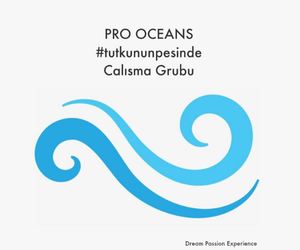
Todd Thimios has what many would believe to be the perfect job – he travels the world on private yachts, searching out the very best dive sites for his clients. His 20 years of luxury wandering has resulted in Ultimate Dive Sites – a glossy book listing his 50 favourites dotted around the globe. Here are three to whet your appetite…
Words and photographs by Todd Thimios
MILFORD SOUND, NEW ZEALAND

Dive below mountains and waterfalls into an environment you’d usually find 200 metres deeper
The South Island of New Zealand – Aotearoa, in the native Māori language – is world-renowned for its dramatic mountainous scenery, and there are few places more dramatic than the Milford Sound. For divers, black coral is the main attraction, but the Sound has much more to offer, and the magic begins with the drive in.
According to Māori legend, Aotearoa’s fjord lands were carved out by the demi-god Tu-te-raki-whanoa, who, upon reaching
Piopiotahi (Milford Sound), did his best work before ending his journey. Undoubtedly, this is one of the prettiest landscapes on Earth, but if you think Milford Sound is otherworldly, wait until you see what’s below the surface.
While technical diving and the discomfort of wearing a drysuit deters many divers, the fun of exploring the ethereal world beneath the fjords is absolutely worth the effort.
Known as New Zealand’s ‘coral capital’, some of the interesting coral trees that you’ll find here are those of red and black corals. Despite their name, black corals are actually white in appearance, thanks to millions of miniscule white polyps in a thin layer of tissue covering the coral’s black skeleton.
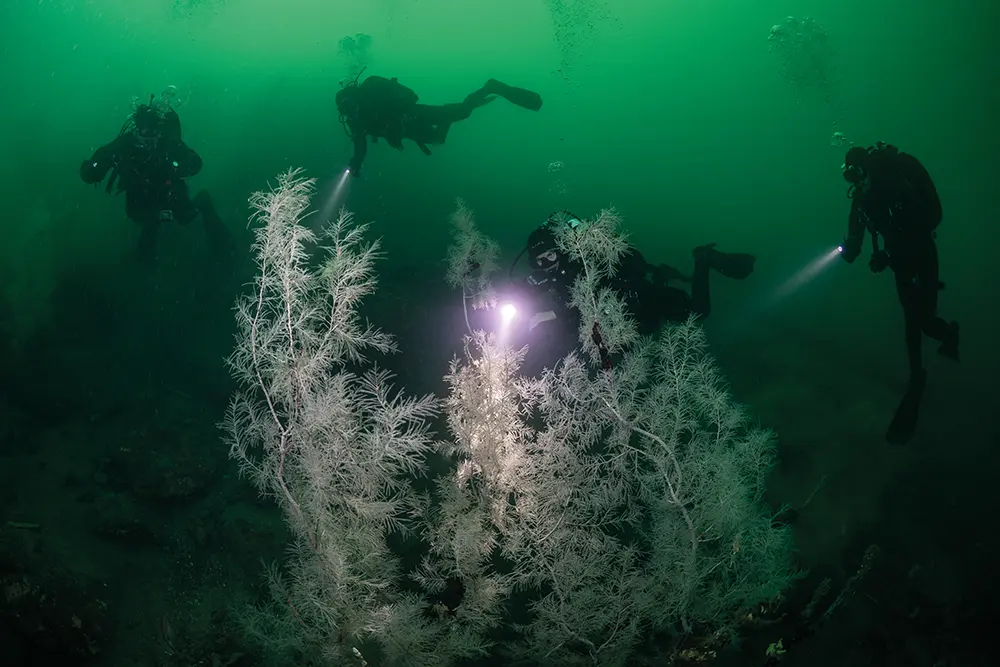
Finding these usually deep-water corals in shallow water is a novelty, made possible by the murky surface layer of freshwater run-off blocking out the sunlight. The existence of deep water animals surviving at shallower depths is called ‘deep water emergence’.
With nearly 6,800mm (267in) of annual rainfall, this is one of the wettest places on Earth. As the rain falls onto the mountains, it pulls nutrients from the forest floor down into the sea, creating a blanket effect on the water’s surface.
The result of this murky, tannin-stained water is an incredible marine environment that is starved of light – an ecosystem typical of 200m (656ft) depth is found within only a depth of 10–20m of water.
There’s an eerie feeling for the first few metres as you descend into the murkiness, but once you’ve reached the bottom of that freshwater blanket, the visibility and scenery opens up to dramatic walls hosting large branches of snow-white coral, stingrays, octopuses, nudibranchs, dog or carpet sharks, and clusters of crayfish, all enjoying the protection of the 690 hectare (1705 acre) Piopiotahi/ Milford Sound marine reserve.
If you’re lucky you may spot a New Zealand fur seal or some bottlenose dolphins. A day with local operator Descend Diving (currently taking a break from diving) will have you zipping through the Sound and out to the Tasman Sea, with scenic stops for waterfalls and wildlife spotting.

Two dives are offered and those without prior drysuit experience can pay extra to get training and a certification while on the tour.
With the dive boat setting off from the boat ramp at 9 am, I recommend that you stay close by, rather than driving the winding road (which is prone to rockfalls) in the dark.
There are chalets and a campground at Milford Sound Lodge (milfordlodge.com), but they book out far in advance. If you can’t stay there, the next option is the town of Te Anau, 118 km (73 miles) away; allow about an hour and a half for the drive as the 1.2 km Homer Tunnel can get congested sometimes.
If you’re driving a campervan, there are also some great, cheap Department of Conservation (DOC) campsites, which are positioned in scenic locations along the drive in (doc.govt.nz).
Best time to dive: October-April.
Gear: it’s cold and dark, so drysuit, gloves, hood, socks, thick undergarments and a good light.
Photography tip: Showcasing the landscape both above and below the surface was my main focus, so I felt that shooting wide was the best option. I used an 11-24mm zoo,m which yielded good results of both marine life and divers among Milford’s cold-water reefs. Ensure your strobes are reliable, as even though visibility can be good, it gets dark real fast.
SS COOLIDGE, ESPIRITU SANTO, VANUATU

Dive deep into an underwater museum of WWII relics mixed with 1940s opulence
Whether you’re a relative newbie to deep water diving or a seasoned deep-sea technical diving adventurer, the SS President Coolidge on Vanuatu’s stunning Espiritu Santo Island offers a fantastic wreck diving experience.
The SS Coolidge isn’t just any shipwreck, at 198m (650ft) long and roughly 22,000 tons (24,000 tonnes), it’s arguably one of the best wreck dives in the world, and you can walk straight off the beach to access it.
Once a luxury passenger liner with elegant cabins and plush restaurants and bars for more than 1,000 people, it was transformed into a troop carrier during World War II when 40,000 troops were stationed on the rapidly converted Espiritu Santo, making it the second largest American base in the Pacific.
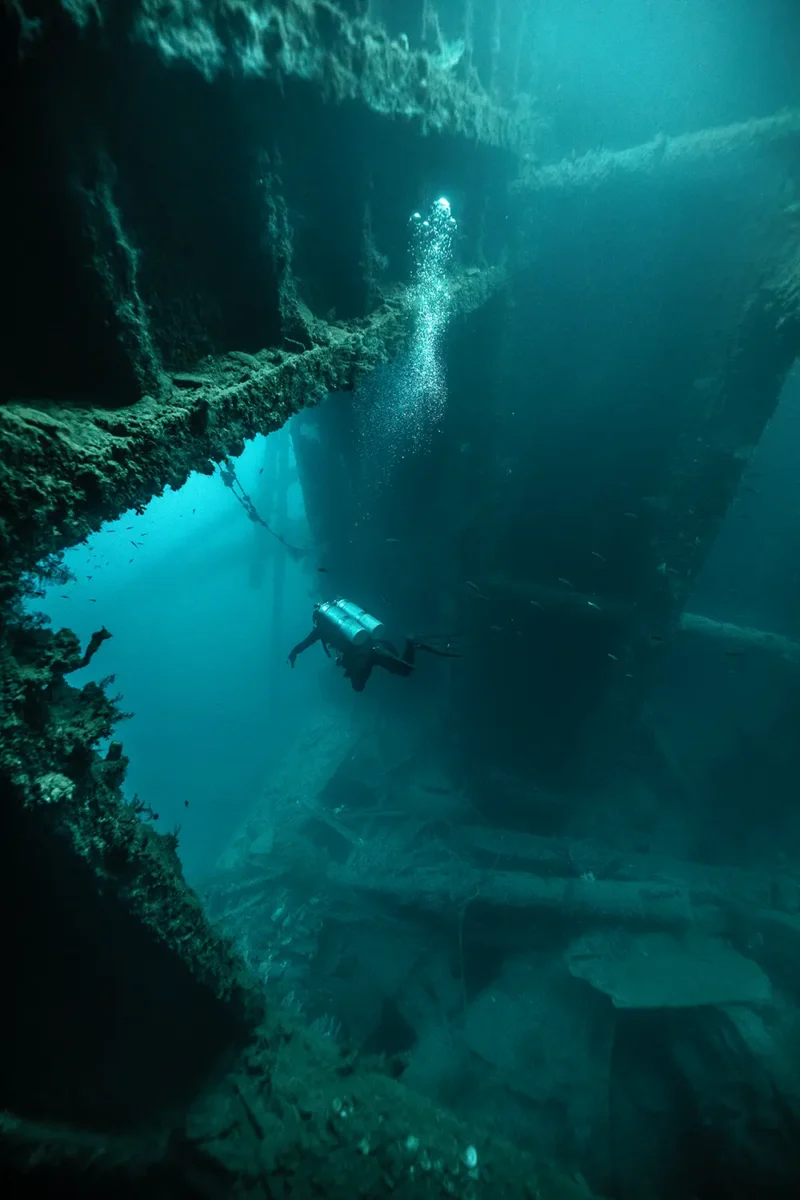
It was here in 1942, while entering Santo’s harbour, that Coolidge collided with its own US mines. The ship’s sailing orders had omitted vital information about safe entry into the harbour, and with fears of Japanese submarines looming large, the captain attempted to navigate through the most obvious of channels.
A mine struck her in the engine room, followed by another near her stern. Over the next 90 minutes, 5,340 men from the ship got safely ashore, with only two lives lost. However, the captain’s attempts to beach and save the ship were shortlived.
Coolidge listed heavily on her port side, sank stern first, and slid down the slope into the channel. Today her stern sits in 72m of water and her bow in 20m, creating a sanctuary for deep wreck diving and one of the most unbelievable shore dives imaginable.
Gearing up on the beach, divers take a short walk to the tide line, and after swimming only 40-odd metres, the bow comes into view, marking the beginning of the colossal structure that is the wreck of the Coolidge.
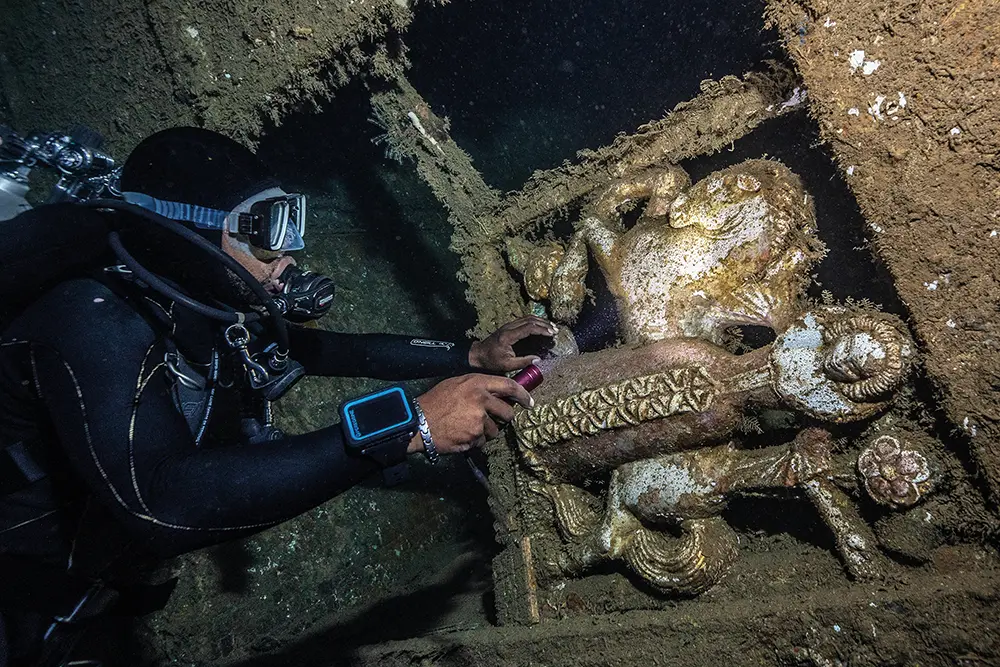
Diving Coolidge is like entering a time capsule. Back in 1980, when Vanuatu gained independence from its French and British colonisers, it was declared that no artefacts would be allowed to be salvaged from the wreck. So today, with the ship still largely intact, divers can swim through its holds and decks, encountering an array of relics from guns, cannons and Jeeps, to helmets and personal supplies left behind by the troops.
Then there’s relics like ‘The Lady’ (a porcelain bas-relief and divers’ favourite), chandeliers, a mosaic tile fountain, elegant baths and grand staircases, which all add to the charm.
While Coolidge is a labyrinth of corridors, rooms and cargo holds, this shouldn’t deter new divers. To truly appreciate the ship’s magnitude and majesty, I recommend at least 10 to 15 dives. After all, she stretches almost 200m in length. But even with just a few dives you can get a taste of her grandeur.

For me, a return to Santo 20 years after I lived here allowed me to see how the wreck has fared over the years (particularly since Vanuatu gets its fair share of cyclones and earthquakes). While a few structures have collapsed (the promenade deck, mainly, and the swimming pool which popped out and fell to the ocean’s floor), overall, the wreck hadn’t changed much. It’s still solid and safe to explore, with the right guides.
Diving in Luganville was pioneered by the legendary Allan Power back in the ’80s. Allan operated a dive centre here right up to his death in 2018. He had made over 15,000 dives on the Coolidge and had taken more than 20,000 divers to the Lady alone.
His legacy is carried forward by Pacific Dive, situated within Luganville’s Espiritu Hotel, which runs daily dives. Its local Ni-Van staff take great pride in the Coolidge. They are incredible guides, accruing tens of thousands of dives between them on the wreck over the years (pacificdive.net).
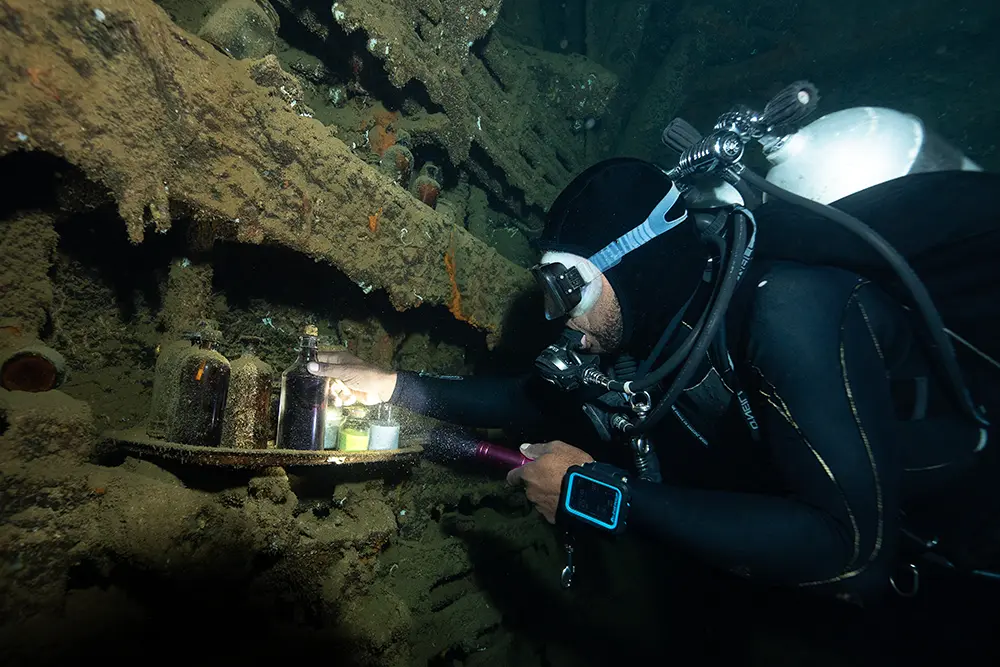
Best time to dive: year-round, but the May-October dry season is best for sea conditions, temperature and visibility.
Gear: 3mm wetsuit over summer and 5 mm over the colder winter months.
Photography tip: Pack your favourite wide-angle lens and dive Coolidge several times to capture the bow and the full length of the ship when shooting her from outside. Inside, strobes are turned on to focus on the many different chambers and artefacts within.
MERGUI ARCHIPELAGO, MYANMAR

For decades sea gypsies have had this region all to themselves… until now
Off limits since World War II, the Mergui (pronounced mer-gwee) Archipelago in southern Myanmar (formerly Burma) opened to liveaboard dive boats in 1997 and, since then, word-of-mouth about the region has started to spread through the diving world.
Their relative isolation and history of being closed to tourists due to Burma’s military regime have helped them maintain their pristine and undeveloped state.
Known to the outside world by their British colonial name of Mergui (the indigenous name is Myeik), these 800-plus islands are scattered across 400km (248 miles) of the Andaman Sea, down the coastline of Myanmar.
Devoid of hotels and beach front bars, the jungle-clad islands, some of them still unnamed, are inhabited only by a few thousand Moken ‘sea gypsies’, the indigenous people of the Mergui Archipelago.
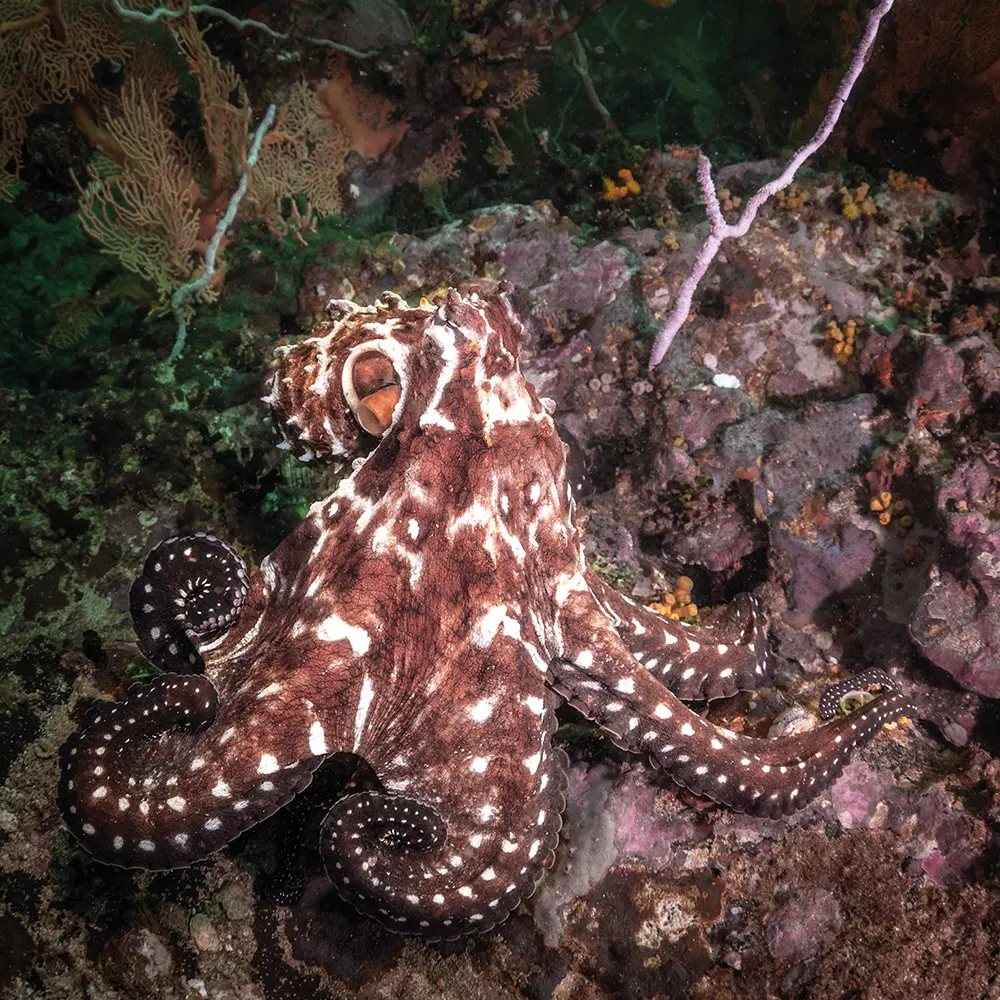
These semi-nomadic people have traditionally spent their days fishing or boat-building and are known for their incredible freediving abilities. For the Moken, the only tourists that they see are a small number of divers or adventure cruise ship passengers, passing through.
On our expedition, we set sail from Kawthaung (Myanmar’s southern gateway to the archipelago), though commercial liveaboards also depart from Ranong across the Thai border. Most of our trip was based around several well-known sites, with the rest of our trip visiting unknown sites for exploratory dives.
Our captain’s favourite dive was Black Rock, one of the Mergui’s most westerly islands. Standing solitary in the sea with a steep wall dropping down to over 100m (328ft), this pinnacle is a magnet for marine life, giant mantas, vast schools of barracuda, trevally, snapper and fusiliers clouding the waters.
Underwater, this limestone rock is covered in soft corals and anemones; the reef’s crannies and crevasses a haven for scorpionfish and other benthic critters.
At night, the dive site transforms as colourful corals bloom and nocturnal creatures emerge to feed in the nutrient-rich waters.
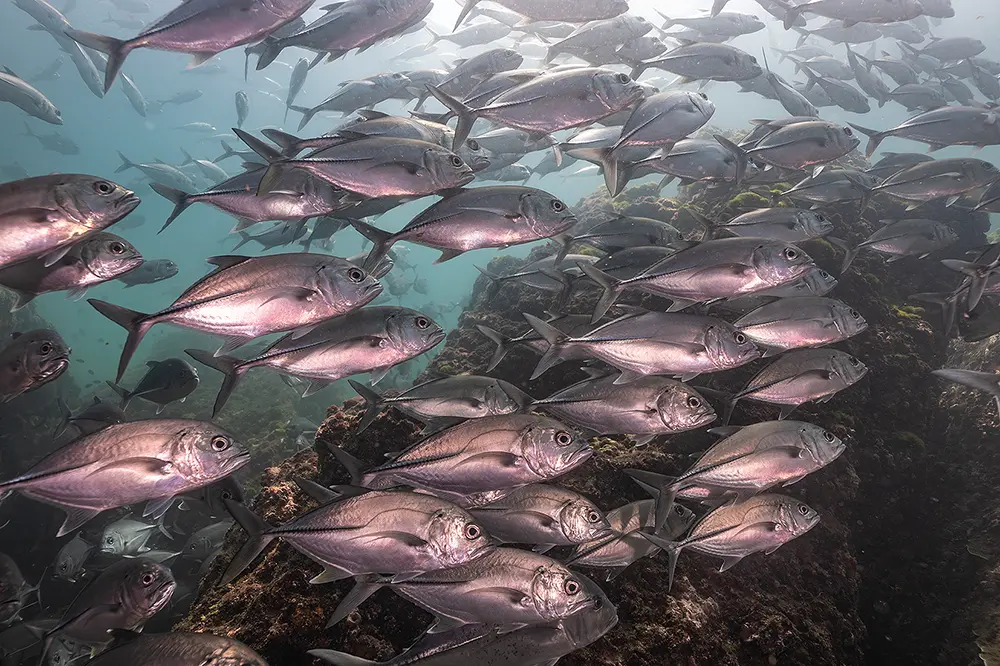
Another favourite spot was Western Rocky. The island is known for its sharks, including whitetips and blacktips, grey reef sharks and some large nurse sharks, which can be spotted inside a tunnel dive that cuts through the island’s core.
Just north of Western Rocky, a dive site aptly named Shark Cave is also good for spotting nurse sharks, plus whip rays, blotched stingrays and the odd whale shark, and then there are smaller cuties such as seahorses and anemonefish.
Perhaps the highlight of the trip, for me, was the huge gorgonian sea fans found in numerous locations, with a dive site named Fan Forest Pinnacle (also known as Rocky Peaks) being especially populous with wonderful gorgonians. To this day, I would say that the largest and most impressive gorgonian fans I’ve ever seen were in the Mergui Archipelago.
While the Mergui Archipelago has many amazing dive sites to explore, the visibility can be a bit all over the place. Cold-water currents bringing nutrients (commonly called ‘the green monster’) can rush through dive sites unexpectedly.
Some areas have been fished hard, while others have been decimated by dynamite fishing. Then, on some dive sites, ghost nets litter the reefs.
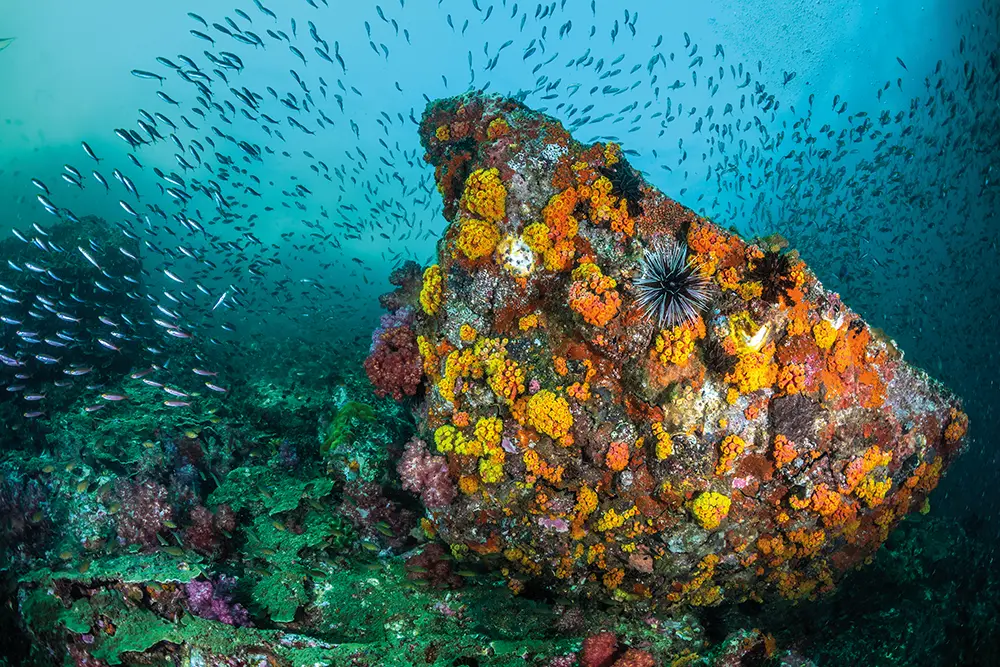
While the archipelago is just beginning to find its feet as a world-class destination for divers, it’s crucial that the government protects the region, not just for the future enjoyment of divers, but also for the Moken people who call it home and depend on these waters for their food, lifestyle and income.
The MV Smiling Seahorse has been running liveaboard dive trips to Mergui since 2012 and offers several scientific and exploratory itineraries. Trips on this small boat, which takes only 16 divers, depart from Ranong in Thailand (thesmilingseahorse.com).
Best time to dive: late October to mid-May for calm seas, blue skies, better visibility and a steady water temperature of 27°C (80°F), which aligns with the migratory patterns of large pelagics, including mantas and whale sharks (Feb–May is prime season for the big stuff).
Gear: 3mm wetsuit for water temperatures around 27°C (80°F) from late Oct to mid-May.
Photography tip: Mergui has a bit of everything: megafauna that needs a wide-angle lens, coral garden seascapes that suit a wide-angle zoom and incredible critters for your macro lens. If possible, pack it all, particularly your wide-angle.
The post Searching for the best – an extract from Todd Thimios’ Ultimate Dive Sites appeared first on DIVE Magazine.





